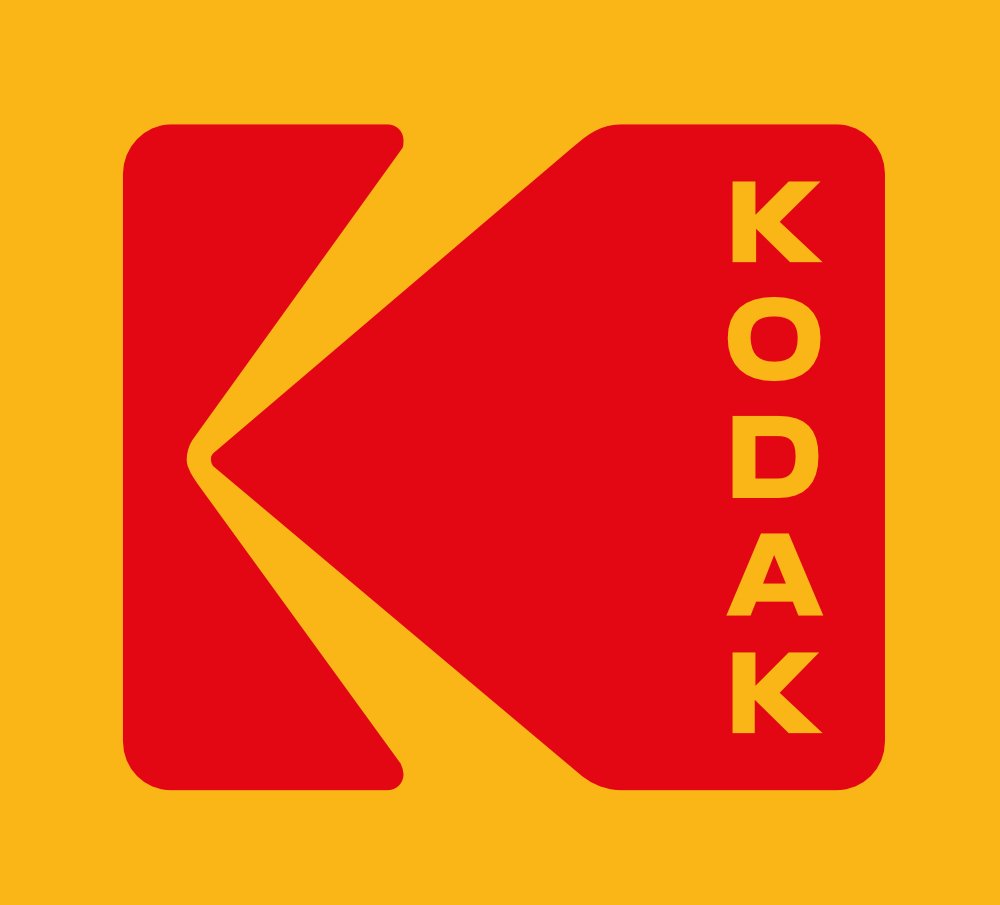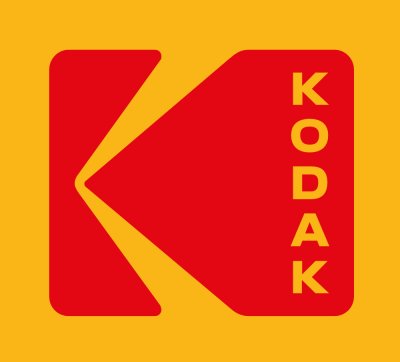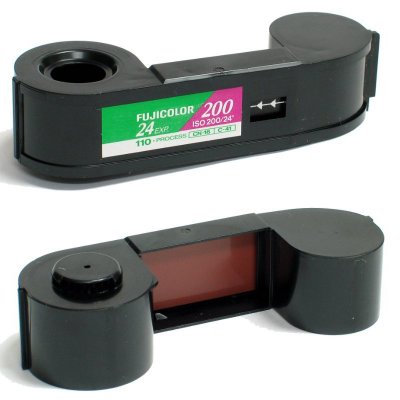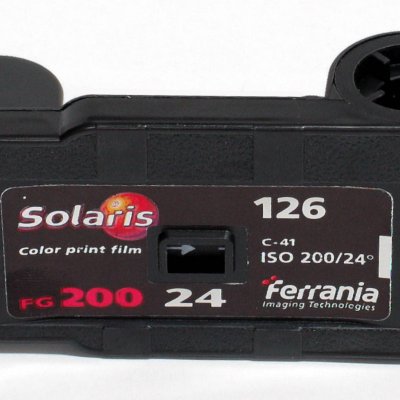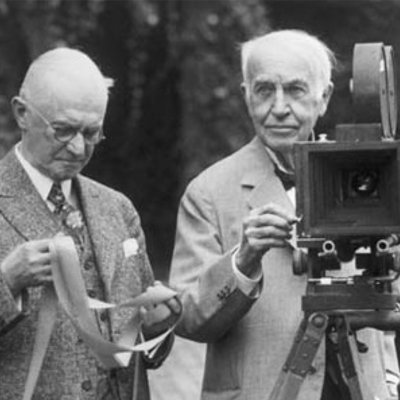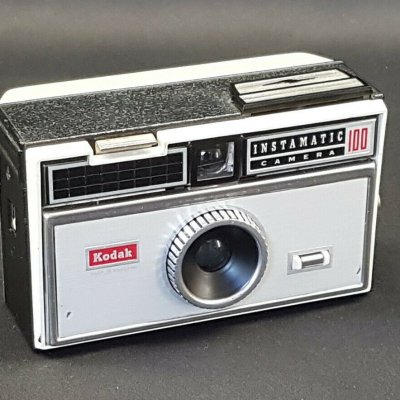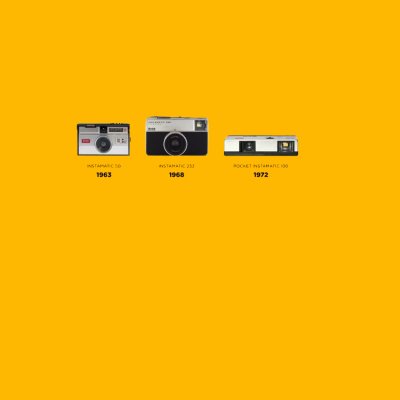Much has been written about the brilliance of George Eastman in creating a mass market for photography and his company's subsequent mastery of that market for a century. More recently, the bulk of analysis has focused on the fall of Kodak from dominance and the underlying causes. 130+ years is not a small field of study by any means, so let's examine just a 25-year slice of Kodak's life that will illustrate how Kodak transitioned from a proactive, anything-but-complacent juggernaut to an increasingly reactionary player in the photography market. The period from 1963 to 1988 is a fascinating one as it contains the best and worst of Kodak.
Why Start in 1963?
In 1963, Kodak introduced the Instamatic camera with its revolutionary, completely self-contained, 126 format film cartridge. This followed the paradigm that Eastman had established with the release of the Brownie in 1900: a simple, affordable, consumer-targeted camera with a new proprietary film format. A small tweak with the Instamatic introduction was a new color negative film - Kodacolor X - initially limited exclusively to the new 126 format. By releasing a new emulsion in a new format with a new camera, Kodak was flexing its full near-monopolistic might. It had been over 20 years since the original Kodacolor film had debuted, so the market was ripe for a new & improved version. The Instamatic eliminated three peeves of consumer snapshooters: 1) having to thread film onto the take-up spool of a camera, 2) setting the film speed on the camera, and 3) trying to determine when they had properly advanced to the next frame. All three of these things were cared for automatically by the 126 cassette. It was just drop-in and go! And if the camera back somehow was opened accidentally, only one frame would be lost as the previously-exposed frames were safely contained inside the light-tight cartridge.
The new format guaranteed Kodak a head start on its competitors and required them to license the cartridge design if they wanted to offer the 126 format themselves. This was the Eastman philosophy to a tee: an affordable camera so simple that ANYONE could use it, and clean up on the consumables (film & processing). And Kodak did. They sold 50 million Instamatics in the first 7 years and 75 million overall through 1988 when they finally discontinued them (in the U.S., anyways). And that's not even where the big profits were! There were literally billions of photographs taken with Instamatics, with the profit margins on film and processing in excess of 60%. This was Kodak at the absolute top of its game and with its prestige at its highest. Sadly, in reaping the rewards of its immense Instamatic success, it was already sowing the seeds of its eventual downfall.
What Kodak Had Accomplished Before 1963
In the eight decades leading up to the introduction of the Instamatic, Kodak had built its empire based on a variety of factors, three of which were: 1) delivering quality products that simplified photography for the consumer at affordable prices, 2) effectively developing and maintaining a market for its products via targeted marketing, and 3) always keeping at least one step ahead of any competitors.
The first point had been made possible by sustaining George Eastman's exacting standards for the production of film, the products needed for its processing, and the processing itself. Kodak had reached a high level of quality control for something as complex to manufacture as photosensitive materials. Also, they had cleverly offered pre-paid processing with the purchase of film right from the beginning, which enabled them not only to reap the profits of developing film and making prints, but also ensured high-quality processing by well-trained personnel.
On the second point, from the first offering of the Brownie, Kodak specifically targeted women and children in its advertising. By starting young, Kodak hoped to have a customer for life. They also implied that wives and mothers would be showing proper care for their families by preserving events and memories on celluloid, and Kodak would always be their faithful partner in discharging this sacred duty. Would you want to take the chance of some fly-by-night operator messing up your precious memories? We didn't think so ;-). The aim of these tactics? In a word, what Kodak was seeking to engender was...trust. In this, they were very successful. Consumers equated the name Kodak with quality and trustworthiness.
Third, Kodak's R and D was the envy of many an industry. By annually setting aside 5% of profits, called "Eastman's nickel" by employees, they sought to remain at the forefront of photosensitive materials technology. They would often sit on advances for years until they felt the need to snuff out a possible competitor or when profitability of then-current technology began to wane. Another way to deal with competitors was to acquire them or squeeze them out by sheer volume of scale. Kodak was a master of such maneuverings and they became their modus operandi.
Going Smaller
As mentioned previously, the Instamatics and the 126 format were a rousing success. And Kodak was able to increase its profit margins over the Brownies and their 120 and 127 formats. How so? For starters the smaller format could use a more compact camera, reducing the amount of raw materials needed for manufacture. Greater use of plastics also allowed for production savings. But the kicker was in the film itself. The most expensive component in the emulsion was silver. The usable area of a single 120 frame was a healthy 3136 square mm and the 127 frame was a still-substantial half of that. The usable area of the 126 frame was 702.25 square mm, only 22% of the 120 frame and 44% of the 127. Kodak's coup was pricing the 126 cartridge for more than a roll of either 120 or 127 film. They believed people would be willing to pay for the convenience, and they were right. Although the 126 format was much smaller, it was still large enough, together with the technological improvements in Kodacolor X, to produce good prints.
Beginning with the original Instamatic, Kodak embarked on a 10-year renewal plan for its mass consumer models (a euphemism for planned obsolescence ;-)). They would follow the pattern of: 1) a new, more compact camera, 2) a new, smaller film format, and 3) a new generation of film emulsion exclusive (initially) to the new format. Their aim? Maintain their dominance of the market and boost profits. Sounds like a plan. If less was more, even less would be even more, right?? Kodak thought so. Their 10-year plan meant that 1972-73 would see the introduction of their next consumer camera line. In the meantime, the explosion in sales of 35mm (135 in Kodak-format speak) cameras had altered the camera market. Kodak had been producing 135 still film since 1935. 35mm's growing popularity now made it the basis for comparison for Kodak's new 110 format that was introduced with the new Pocket Instamatic camera. By this time, Kodak had sold close to 60 million 126-format Instamatics.
Again, Kodak introduced a brand-new color print film along with the new camera and format. Kodacolor II incorporated another decade's worth of refinement in film technology and introduced C-41 processing, which is still current for color negative film. Kodak would need every improvement in the emulsion because the 110 format shrunk to 13mm x 17mm (221 square mm), less than a third of the area of 126 and 1/4 the area of a 35mm frame. With improvements in manufacturing efficiency, and the material savings of the smaller format, the profit margins on film & processing rose towards 70% as Kodak priced 110 film & processing just below that of 126 and 135. To provide a little breathing space for the new format, Kodak again limited Kodacolor II's release in the first year or so to just the 110 format. This effort paid off, as over 25 million Pocket Instamatics were sold in less than 3 years, smashing the original Instamatic's mark over the same period.
However, distant clouds were now beginning to appear on Kodak's horizon. The major user issue that the Pocket Instamatics addressed over the original Instamatic was the size of the camera. It certainly was easier to carry the 110 camera in a pocket, just as advertised. However, most of the design effort had gone into reducing Kodak's costs and therefore increasing, or at least maintaining profits in the face of the general downturn in the U.S. economy in the mid-'70s. The price for compactness was the reduction in format size. As format size goes down, there is less margin for error when making enlargements from negatives because of the cropped frame size. Grain becomes more apparent because the magnification needed to produce a standard size print has to become greater. With the 110 format Kodak was beginning to test the limits of what consumers would stand (ISO 100 film was OK but the first 400 speed color print films of the late-'70s were pushing the issue when it came to grain in 110 format).
Coupled with the technical challenges of the 110 format was the rapid development of compact 35mm cameras by the Japanese during the 1970s and '80s. Kodak had produced 35mm cameras since 1934, with limited success by their lofty standards. They always seemed to have bit of an identity crisis when it came to 35mm. They had been the first company to introduce a color 35mm film for still photography, the legendary Kodachrome, in 1935 and they dominated 35mm film sales as they did all other formats. Their German division made some beautiful and very capable models known as Retinas, which were a relatively inexpensive alternative to Leicas (relative to the Leica, that is :-)). The timing was not fortuitous for Kodak in this, being stuck in the midst of the Great Depression. Meanwhile, in the U.S., Kodak went back and forth between attempts at their standard formula of simple & relatively affordable versus premium models, like the gorgeous Ektra (expensive compared to a Leica ;-)) of 1941. The problem for Kodak was that they never could hit on a 35mm camera analogous to the Brownie that fit with their real identity. It was one of their rare failures to dominate a format at the expense of their U.S. competitors (such as Argus). Once the 1960s arrived, they could not match the production efficiency of the Japanese. So, by 1969, Japan was dominating the 35mm camera market worldwide. And Kodak, rolling along with their Instamatics, dropped their less profitable 35mm camera line completely and contented themselves with dominating the 35mm film market, which was far more rewarding in terms of profit. Kodacolor II only came out in 135 a year after its release in 110. Kodak's benign attention to 135 camera technology would catch up with them in the 1980's.
Auto focus came to Japanese 35mm compact cameras in 1977 with the Konica C35AF, and a slew of copycats from the other Japanese companies soon followed. Olympus wowed the photographic world in 1979 with its super compact XA, which boasted a sharp 35mm f/2.8 lens and a unique clamshell cover. The Fujica DL-100 (1983) offered drop-in loading and motorized advance/rewind with a standard 35mm cartridge. The Japanese were methodically turning 35mm into, not just the most successful enthusiast-level format, but a consumer contender. During this same period, Kodak was also preparing for its next assault on the consumer market. Kodak and the Japanese manufacturers were now on a collision course regarding the consumer camera market.
That's Sooo '80s - The Disc
By 1982, Kodak was comfortably ensconced in its consumer camera development pattern: new camera; new format; new emulsion. While 110 could easily be described as a miniaturized 126, Kodak's latest format was like nothing seen before. With the recent commercial advent of personal computers that used floppy disks for storage, Kodak seemingly had the perfect new film format for the times: Disc. With 15 frames arrayed on spokes tied to a central hub, the disc format looked futuristic and at the same time, familiar. For kids who had grown up with a Viewmaster, the Disc was simply the next step up (Kodak marketing strikes again!). Kodak also looked to silence complaints about film flatness that had dogged the 126 & 110 formats. Now that there was no roll to deal with, they doubled the thickness of the film stock (equal to that of large format sheet film) to ensure complete flatness. Disc cameras were even thinner than 110 cameras, and now were oriented vertically instead of horizontally. They featured built-in lithium batteries that were supposed to be good for 5 years or 2,000 exposures and allowed for extremely quick flash recycling. Everything about them seemed fresh while ye ol' 110 was looking a tad stodgy.
One thing hadn't changed, however. That being Kodak's insatiable hunger for profit. The 1970's had brought major inflation to the US along with rising silver prices and this threatened those juicy, succulent margins Kodak had grown so used to. Disc had to preserve the status quo. That would entail reduction of production and processing costs, and an even more intense application of the cost cutting that had gone into the 110 project. The film frame of the Disc measured 8mm x 10mm; just over a third of the area of 110, and less than a tenth of a 35mm frame (864 square mm). Kodak was aiming for a higher level of profitability than they had achieved with 110 versus 126. Disc was also limited to 15 frames, whereas both 126 and 110 were available in 12 or 24-exposure cartridges. And here came the coup de grace: one disc with its 15 frames cost as much as a 24-exp. roll of 110. Ka-ching, ka-ching, ka-ching!!! That came to 5 cents more per frame. And we haven't even gotten to processing yet.
On the subject of film, Kodak did not fail to bring some impressive film technology to market with the Disc. The tiny format meant that resolution was at a premium, so the chemists had their work cut out for them to improve on the existing grain structure in film. Their answer: "T-grains" & DIRs (Development Inhibitor Release couplers). With T-grains, the engineers found a way to flatten the grains of silver to increase their surface area and therefore, the sensitivity of the emulsion. DIRs improved sharpness and extended exposure latitude. Christened Kodacolor HR (presumably for "high resolution"), the new film had an ISO speed of 200 (a one-stop boost over Kodacolor II). Kodak again delayed introduction of Kodacolor HR in other formats to increase the appeal of Disc.
At first, it seemed that Kodak had done it again. The Disc debuted in June of 1982 and by the turn of the year 8.2 million had been sold. This obliterated the first-year sales record of the Pocket Instamatic by nearly 5 million units. Kodak executives were jubilant! But this was the high-water mark for the Disc; by the end of 1986, 26 million cameras had been sold. That meant a drop in sales in each year after the introduction, and by February 1988, Disc was dead, with production of cameras suspended indefinitely. The last of the inventory took two years to disperse. Ironically, 1988 was also the final year that a 126 Instamatic was produced. Disc didn't even outlive its original ancestor.
What Went Wrong?
You could say that Kodak hit the perfect storm when it came to the Disc. Although they had solved the film-flatness issue with the new format, it would be processing (among other things that we'll get to) that would doom Disc. Kodak knew full well that they had stretched resolution to its absolute limit with the puny negatives. To maximize the resolution when making prints, they developed high-resolution 6-element enlarging lenses instead of the traditional triplet enlarging lenses that were common in processing labs. Of course, these were more expensive and the printing as a whole took even greater attention to detail than 110. Disc also required new processing equipment that labs had to purchase from Kodak. If they were willing to offer processing for the new format at all, many labs ignored Kodak's recommendation of the 6-element enlarging lenses and print quality obviously suffered.
It did not take long for Disc's reputation to feel the effects. That Kodak saw this problem fairly early on, while still publicly proclaiming the overwhelming success of Disc, can be seen by the fact that they introduced a new budget Disc camera, the 3000, which used a standard, replaceable 9V battery, trying to jumpstart sales. They also reformulated Kodacolor HR late in 1983 to try and boost flagging film sales. Incidentally, film sales are a better indicator of the long-term viability of a format than camera sales. Kodacolor VR was the answer, Kodak hoped, but it wasn't. Sales continued to fall, bringing about yet another revision to VR in late 1984, this time with Kodak adding their most advanced T-grain technology in a desperate move to reduce the graininess in prints. That came to three film generations in three years, unprecedented in Kodak's history. Except the problem wasn't the film...it was the format. Kodak had shaved the margins too thin and they were paying for it in the worst way...sales falling like a wounded duck and their once-sterling reputation taking a serious hit.
The other half of the perfect storm came in the form of a typhoon from the Far East. On the one hand, the 35mm cameras that Kodak had neglected since 1969 had been refined to a heretofore unseen level by Japanese manufacturers. By 1984, there were not a few relatively affordable compact autofocus, autoloading, autowinding/rewinding 35mm cameras that were no less convenient and more versatile to use than the latest Kodak compacts. And because they used 35mm film, they blew Disc out of the water as far as image quality went. The 1980s also saw the rise of the 1-hour 35mm minilab (which had not been a Kodak innovation, because it would have cannibalized their existing processing structure) for processing that became ubiquitous across drugstores and supermarkets throughout the world. 35mm had truly become accessible to the mass-consumer market.
On the other hand was Fujifilm. They had prioritized 35mm film performance in concurrence with the Japanese camera makers' efforts to engineer sophisticated yet easy to use electronic cameras. They had beaten Kodak to market with an ISO 400 color print film in 1977 and had been steadily if slowly gaining market share in the U.S. with their more-saturated colors (consumers like those saturated colors ;-)), and aggressive film improvement schedule and pricing. Technically they had caught up with and were now beginning to surpass Kodak. ISO 400 color film was a match made in heaven for compact 35mm cameras, while Disc was stuck at ISO 200. Fujifilm's ambitious improvement program for its 35mm films forced Kodak to accelerate its schedule of transferring the improvements developed originally for Disc (T-grain and DIRs) to the 135 line. This only served to emphasize the resolution discrepancy between the formats.
The final blow that killed Disc was self-inflicted. Kodak's cash cow had always been processing. In 1983, it cost, on average, $5.25 USD per Disc for processing and a set of 4x6 prints. For a 24-exp. roll of 110 it was $6.45; for 24-exp. in 35mm it came to $6.95. These were prices for ISO 200 Kodacolor in each format. First of all, when it came to image quality, a 4x6 print was the end of the line for the two Kodak formats, while 35mm wasn't even breathing hard. Next, when you break the processing/printing down to a per print cost, it gets worse for Disc:
- 35 cents/print for Disc
- 27 cents/print for 110, nearly 25% less than Disc
- 29 cents/print for 35mm, 17% less than Disc, not to mention that you can often get an extra frame or two per roll, depending on the camera.
Lower image quality + a higher cost per picture when it came to processing = the end of the consumer Kodak camera empire. Sean Callahan, editor of American Photographer, summed it up this way:
The disc has charming cosmetics, but after four or five rolls the quality of the pictures outweighs the convenience.
After an admittedly hot start, Disc sales were already slumping after the holiday season of 1982 with over a million cameras sitting on dealer's shelves. International sales were disappointing too, which was not not surprising, considering 35mm's traditional strength in the European and Japanese markets. Here was Kodak's neglect of 35mm coming back to bite them. In an article in Fortune magazine in 1983, Thomas Moore presciently stated that the future of Disc would be decided that summer and that it looked like it may only have half the life cycle of its Instamatic predecessors. The release of improved Kodacolor VR in 1983 & 1984 was a futile attempt to stem this tide, but Disc was taking on water... and fast.
Kodak made a belated attempt to get back into consumer 35mm cameras in 1985 by basically badge-engineering Chinon (with some input from Rochester) cameras. The irony was that the top-end models of this lineup were some of the best 35mm compacts on the market. But it was too little, too late. The final nail in Disc's coffin was the single-use 35mm camera that Fuji introduced in the U.S. in 1987 (a year after it had debuted in Japan in 110 format). Although Kodak beat Fuji by a week when announcing a single-use camera for the U.S. market, they actually were behind in bringing it to market and it was in the smaller 110 format (unfortunately named the Fling, not Marketing's finest hour ;-)). Fuji's new 35mm version dominated and Kodak killed the 110 Fling after less than a year and bought out a 35mm Fling. Public outcry about the wastefulness of such cameras forced both Fuji and Kodak to adopt recycling programs, the development of which hurt Kodak more as it was already financially suffering due to a series of ill-advised acquisitions and other poor decisions.
Conclusion
Disc had been a bridge too far for Kodak. The lust for profits that had become entrenched over decades caused them to lose touch with their identity. They had built their reputation on affordable quality cameras that were convenient to use for the average consumer. That had come from analyzing what the consumer needed and then meeting those needs. Over time profits had come to dominate management's thinking so much that they started taking the customer for granted. The drop in image quality together with the higher processing costs, coupled with an appealing alternative being readily available the form of compact automatic 35mm cameras was too much for consumers to resist. In 25 years, Kodak had gone from total domination of the photographic industry...to being a bloated bureaucracy that could not respond fast enough to a changing market. In just 11 years (1978-88), Fuji had made gains of approximately 14% in the U.S. film market, while Kodak lost the same amount. Of greater concern was that Kodak had now been reacting to Fuji's innovations for a decade. (And in the case of the Fling, they copied the original 110 instead of thinking preemptively and going with 35mm.) They were now a reactionary instead of a leader and innovator. How had this happened?
Actions or the lack thereof, are preceded by attitudes. With decades of success behind them, Kodak leadership fell victim to two very human frailties: complacencyand arrogance. Having dominated the consumer camera and consumables markets for so long, executives began to think it was their birthright. They got used to the insane profits on film and processing, and this masked growing inefficiencies in production, R & D, and an increasingly unwieldy bureaucracy. Worse still, most Kodak executives could not envision a future that deviated from chemical-based photography, even when such advances were being made in their own laboratories, and studies done by their own marketing department were clearly saying otherwise. It was too comfortable and easy to stay in the present and keep doing what had worked so well for them in the past.
Arrogance almost always accompanies complacency, and it definitely did with Kodak. Kodak's culture was so infatuated with its own brilliance, that it was unimaginable that anyone else could possibly match their technical capability. This caused them to turn a blind eye in the 1960s & '70s to what would become their greatest nemesis...Fujifilm. A later article will examine this more in depth, but suffice it to say that Kodak's underestimation of their Japanese competition would play a large role in their later demise. Kodak's arrogance also caused them to underestimate the average consumer. They figured that clever marketing could overcome common sense when it came to Disc. After that, consumers no longer would just take Kodak's word for it. They had lost their greatest asset: the consumer's exclusive trust. And they had no one to blame (although they would do their best to try ;-)) except themselves. By 1988, Kodak employed over 160,000 people worldwide. But that was more indicative of being out of control than dominating the market. The discontinuance of the 126 Instamatic in that year was emblematic of the true situation. Kodak's management was stuck in 1963, but the photographic world wasn't. In another two and a half decades, the once-unthinkable would happen...bankruptcy.
